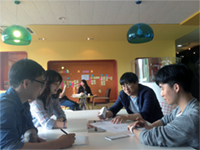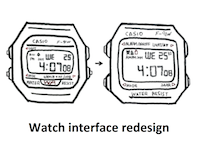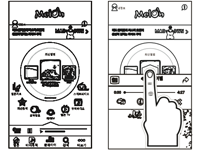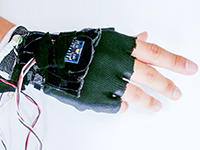

Capstone Design (Undergraduate Fall 2017, HFE401). Final project course for all undergraduate students completing their degrees in Human Factors Engineering. Role was as coordinator of seven team projects (3-5 students/team) supervised by six different professors; also supervised two of these projects. Capstone projects took a wide range of forms from a physical ergonomic case study in handle design, to an empirical lab assessment of subjective time perception through user-centered mobile app design to prototyping next generation user interfaces for Augmented Reality (AR) smartglasses.

Cognitive Ergonomics (Undergraduate, Fall 2013, Fall 2014, Fall 2016, Fall 2017, AHE202). Cognitive Ergonomics is the study of how humans perceive, think and act and the application of this knowledge to the design of products and services with the goals of reducing errors, increasing efficiency and making systems more satisfying to use. By better understanding people, we are able to make products that fit their needs. In this course, students complete case studies analysing the cognitive issues leading to problems in real world situations, developing their critical thinking skills. They also complete a class project in which study select, study and redesign an everyday object with the goal of improving its cognitive ergonomics – how safe, easy and convenient it is to use. Ultimately, the goal of this course is to teach students about the fundamental aspects of human cognition including processes of perception, memory, decision making and attention. Through applied lectures they learn how to apply this knowledge to topics such as display and control design and application areas such as driving and automation design.

Usability Engineering (Undergraduate, Fall 2013, Spring 2014, Fall 2015, Fall 2016, Fall 2017, AHE311). Usability deals with how make user interfaces to digital systems and software (such as computer applications, mobile devices and websites) learnable, memorable, effective, efficient and error-proof. Usability, and the closely related area of user-centered design, are core skills for digital design practitioners working in technology companies. Working in teams students select a large software system such as a commercial website and conduct a complete usability process on a sub-set of its features. This includes stages of requirements elicitation, conceptual design, prototyping, evaluation and redesign. Ultimately, student deliver a prototype that showcases their improved designs.

Interactive Technology / Physical Computing (Undergraduate, Fall 2013, Spring 2014, Spring 2015, ID304/HSE305). The Interactive Technology (and Physical Computing) course introduces students to the tools, techniques and processes of making physical prototypes that sense and respond to the real world. Student prototypes move beyond physical form to become interactive objects that are able to meaningfully engage with users. This objective is achieved through a series of short projects based on creating prototypes that interact with the world based on elementary properties such as light, sound or movement. Whilst creating these systems students learn to use Arduino, an open source platform for electronics prototyping.
In fall 2013, this course was co-taught with ChaJoong Kim
In fall 2015, this course was taught as Physical Computing (previously Interactive Technology).

Human Computer Interaction (Graduate, Fall 2015, Fall 2016, DHE552).This research-oriented course in HCI is split into three projects (cover interface design, empirical evaluation and a student pitched research project). A short set of lectures cover basis topics in the first half of the course and the second half is devoted to student led seminar sessions covering recent and/or seminal HCI research papers.

Thinking with Things (Graduate, Spring 2013, Fall 2014, DHE74301). This course explores arguments and theories in cognitive science that discuss the idea that our bodies and environments are a key component of our cognitive processes. Armed with these perspectives, students will be encouraged to develop projects that express these notions in the design of physical and tangible computing systems. If everyday things help us think, what is the potential of sensed, actuated or smart objects to push these boundaries further? Practically, course activities start with lectures and student led seminar classes fleshed out with tutorial and skill swapping exercises covering basic physical and tangible computing technologies. It closes with studio project activities that seek to instantiate the theoretical concepts covered using the skills acquired and in order to realize physical computing prototypes: smart objects that augment the mind.
An updated version of this course was taught as Interaction Design (Graduate, Fall 2014, DHE52701).

Research Methods and Statistics (Graduate, Spring 2013, DHE54001). This course is a graduate introduction/refresher to the research methods and statistics used in behavioral science. Rather than emphasize theories and mathematical derivations, it focuses on understanding of the fundamental concepts underlying experimental design and statistical testing. Students are encouraged to select a research problem from their own work for the class project and are mentored through the process of meaningfully analyzing the data. Key topics studied include validity, reliability and experimental design, and procedures discussed included basic correlation and means comparison test as well as ANOVA (including repeated measures and ANCOVA) and single and multiple regression.